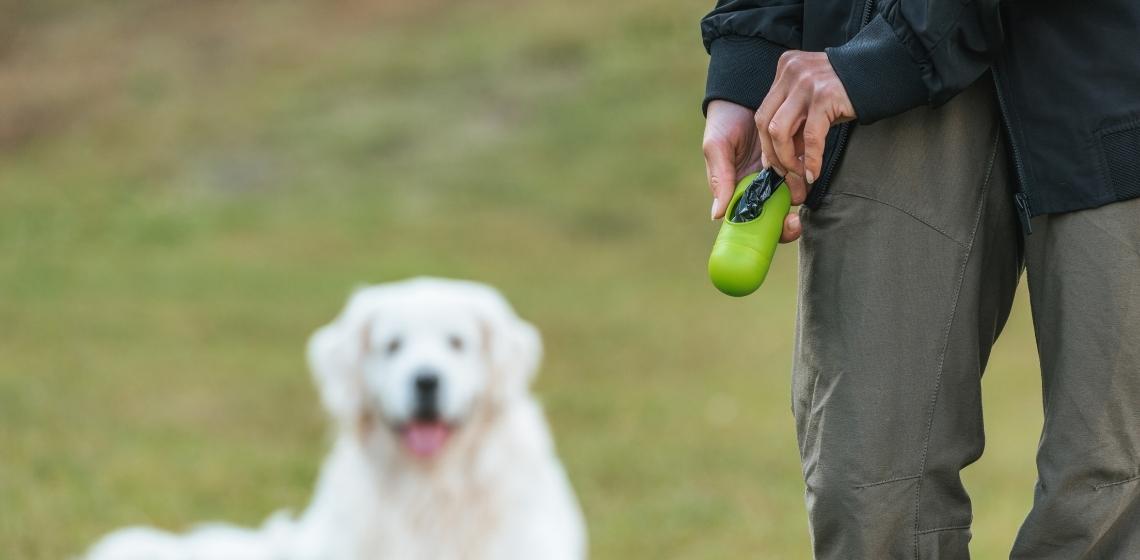Table of Contents
What is Meant by Rectal Prolapse in Dogs?
Though treatable, rectal and anal prolapse in dogs can cause discomfort, pain, and infection and negatively affect a pet’s quality of life. Therefore, prompt recognition of the problem and timely veterinary care are pivotal to ensuring your dog’s good prognosis.
When referring to the gastrointestinal tract, it is the rectum that prolapses. The anus is the opening at the end of the gastrointestinal tract, permitting waste (feces) to leave the body. Prolapses occur through the anus, the exit. The classification of rectal prolapse includes:
- Complete prolapse – Where all layers of the rectum come out through the anus
- Incomplete prolapse – Where only the innermost layer protrudes
Symptoms of Rectal Prolapse in Dogs
Signs of dogs with rectal prolapse may include:
- Straining to poop
- Spending more time than normal trying to poop or pooping more often than normal
- Change in the stool – smaller, drier, or more runny or pure liquid (diarrhea)
- You may even see intestinal parasites in the poop
Dogs with prolapse may have additional findings at home or appreciated by the veterinarian. These may include:
- Distension of the belly,
- Abdominal pain
- Incontinence (leaking feces)
- Bad odor
- Blood in the dog’s stool
- Tenesmus (Straining to defecate)
- Stranguria (Straining to urinate)
What Causes Rectal Prolapse in Dogs?
It is key to understand that rectal prolapse is not a disease but the result of an underlying condition.
Rectal prolapse occurs in dogs of any age. We commonly see it in puppies with large numbers of intestinal worms. Still, we also see it for many other common reasons. Causes of rectal prolapse in dogs include:
- Constipation – This can occur in dogs with back or hip pain, underlying kidney disease, or other underlying conditions
- Diarrhea – occurs secondary to various reasons, including colitis, gastroenteritis, intestinal parasites, diabetes, inflammatory bowel disease, food allergies, and many other disease processes.
- Dehydration
- Intestinal blockage – due to a foreign body (something the pet ate not passing) or a tumor
- Straining of any kind – weakens the structures, normally keeping the end of the large intestines in the body, and this causes them to stick out of the anus.
- Urinary tract disease can also cause prolapse – animals may strain to urinate or defecate; even though the exit areas differ, straining affects the muscles in the area. This could include bladder stones, urinary tract infections, and other related causes.
- Any other condition that may weaken the pelvic floor muscles (Pelvic floor muscles are those in the pelvis that control posture/ability to urinate and defecate).
- Obesity
- Cancer in any location, not just the intestines
- Anal gland disease – infection, impaction, or rupture
- Prostatic disease
- Dystocia – Dogs whelping may strain while giving birth or have trouble delivering the puppies and can prolapse the rectum or uterus
A rectal prolapse must be correctly diagnosed and not misinterpreted for an intussusception
When one section of the intestines slips into another surrounding section, it’s known as intussusception, a dangerous condition. This blocks food and fluid from getting past and can disrupt the blood supply of the involved intestine. Sometimes, intussusceptions prolapse out the anus and can be mistaken for a prolapsed rectum. However, your vet can easily distinguish the two with a rectal exam or a blunt instrument like a thermometer.
Diagnosing Rectal Prolapse in Dogs
Rectal prolapse diagnosis must include ruling out other conditions that lead to a dog with a swollen buttock. Rule outs or diseases that may also be present with the prolapse may include anal gland tumors or infections, perineal hernias, or perineal fistulas. Regardless of concurrent disease, a vet must accurately diagnose this condition to treat it properly.
Diagnosis occurs via a detailed physical examination:
- Your veterinarian will perform a rectal exam, using a finger to feel the area inside and out and determine what tissue is prolapsed (sticking out).
- However, unlike in humans, hemorrhoids in dogs do not generally occur.
- Fecal sample – to assess for parasites
- Radiographs – X-Rays (radiographs) are used to evaluate the GI tract and make sure nothing is blocking the intestines.
- A belly ultrasound may be needed to rule out cancer, such as an intestinal mass or other blockages
- Finally, if no cause is identified, a colonoscopy may be needed to visualize with a camera inside the lower intestines and rectum
Treatment of Rectal Prolapse in Dogs
First, your vet will clean the area; if the tissue still appears healthy and can be replaced, the vet will replace it. Using anesthesia, your veterinarian will suture in a ‘purse-string’ fashion. This encircles the anus, making the opening very small to prevent a reoccurrence of the prolapse. Sutures usually remain in place for two to seven days. Sometimes vets use a topical numbing agent or a spinal injection to reduce straining and minimize pain and discomfort, allowing it to start to heal.
Additional treatment will include:
- Your pet will be sent home with a cone (E-collar) to prevent licking/chewing
- Exercise restrictions will be in place until the tissue heals
- Diet Change – you’re pet’s diet will be changed to keep the stools appropriately soft but not liquid. This minimizes the work of pooping and also helps to ensure the area stays as clean as possible. This may be a short-term or permanent diet change, depending on the underlying cause of the prolapse in your dog. This may be a bland diet, novel protein, or hypoallergenic diet, usually consisting of moist food. Again, the underlying condition plays a role here.
- Pain medications and antibiotics will usually be prescribed to reduce the risk of infection and ensure your pet remains comfortable. Pain delays healing, so pain management is key.
- Miralax or similar stool softener may be prescribed to allow the poop to pass more freely and lessen straining
Sometimes, the prolapsed rectal tissue is too diseased or damaged to replace back in the anus or simply cannot be replaced. If this were to occur, surgery might be necessary. With surgery, your pet may need one of two options:
- Remove the diseased tissue (an R&A surgery aka a resection and anastomosis)
- Colopexy – From inside the abdomen, the veterinarian will take the rectum and suture it to the body wall so it cannot re-prolapse.
Finally, treating the underlying cause is critical to prevent reoccurrence.
If parasites are identified, appropriate anti-parasitic therapy will be prescribed. Make sure to follow up with recheck stool samples as directed. Often, we want 2 samples with no parasites seen 2 weeks apart before we feel comfortable stating that the parasites are gone.
Treatment varies with each underlying condition if a tumor or other cause is found.
Treating Rectal Prolapse at Home
If you think your dog has rectal prolapse because you see a donut or sausage-like structure, red, sticking out of your dog’s rump, or you simply see swelling in the perineal (tooshie) area, seek veterinary medical care. Do not attempt to treat this yourself.
The best thing you can do for your pet is to bring a dog to the vet near you. However, if you cannot get to your vet immediately and have an e-collar (cone) at home, definitely place this on your pet right away. Additionally, try to keep the tissue moist but clean. When the tissue dries out, that can lead to tissue death more rapidly. If your dog develops diarrhea, feed a bland diet. Contact a veterinarian to address the issue if the pet doesn’t respond.
Rectal Prolapse Prognosis and Recovery
Generally speaking, as long as the underlying cause of the prolapse resolves, the prognosis for dogs with rectal prolapse is good. However, suppose parasites, diarrhea, constipation, or other straining causes remain. In that case, the condition will likely reoccur, and the risk of damage to the rectum increases with each prolapse. If the condition reoccurs, the prognosis worsens, and identifying the primary trigger must be pursued.
If your pet requires surgery rather than just a temporary suturing in place of the rectum, while the prognosis for reoccurrence is excellent, underlying damage to the tissue could result in chronic digestive issues depending on how much of the rectal tissue was damaged and how much tissue needs to be removed. Thus, early veterinary care again is critical to minimize complications and improve outcomes.
How to Prevent Rectal Prolapse in Dogs
To prevent rectal prolapses in dogs, one must avoid or promptly treat the underlying causes. Ensuring your pet has a healthy stool, poops regularly and normally, is on a monthly heart worm preventative (which also protects against several common intestinal parasites), and recognizing any condition that causes straining, is key.
Ensure your pet eats a well-balanced, healthy diet, avoid people food, and keep your dog at its ideal body weight and condition. (You should be able to feel the ribs easily, and your pet should have a waist at the end of the ribcage), all help minimize the chance of underlying diseases that commonly cause rectal prolapse.
Summary
Rectal prolapse in dogs occurs, though not very commonly. When recognized early, the condition can be treated, and the prognosis remains good, as long as the underlying trigger for the prolapse is effectively addressed. If you are concerned your dog may have rectal prolapse or has a condition that could lead to it, get your pet evaluated by a veterinarian.
The length of time a dog may survive with prolapsed intestines varies on the dog’s general health, how long it goes without medical attention, whether the underlying reason is treated, and how ill the pet gets. Untreated, the inability to defecate will result in systemic illness, and failing to treat the prolapse will be fatal. However, with treatment, dogs can go on to live rich, full lives.
Generally speaking, the prognosis for rectal prolapse is good, with prompt and appropriate veterinary care. That said, waiting too long to seek help, allowing the prolapsed tissue to turn black, and even allowing the pet to chew on the rectal tissue can lead to severe complications, including death.
Have you ever strained to poop? Have you ever had a sore anus after wiping a ton because you had a bout of diarrhea? Imagine if your rectal tissue or even just the muscles of the pelvis were sticking out of the anus; of course, you would be sore and in pain. Rectal prolapse is not only painful, but your dog could also be sick from the underlying cause of the straining or prolapse. Get your pet help but do not give over-the-counter pain or other medications without consulting your veterinarian.

Dr. Tramuta-Drobnis keeps herself busy as a veterinarian and public health professional, a freelancer, writer, and researcher. Receiving her Veterinary Medical Doctor degree (2005) from the University of Pennsylvania and her Master’s in Public Health from the University of Florida, she’s accrued over 17 years of veterinary clinical experience. Her work with small animals and exotics span general practice, emergency, and critical care medicine. She has a passion for One Health, infectious diseases, pain management, veterinary nutrition, and more.








